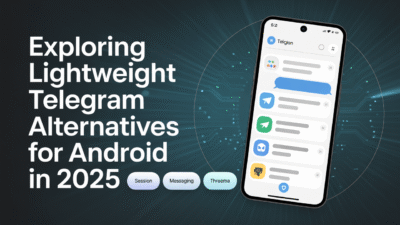Animations play a pivotal role in crafting engaging user experiences within Android apps, especially with the introduction of Material 3 Expressive. This new design language elevates the visual and interactive aspects of Android applications by introducing fluid motion systems, expressive animations, and dynamic color palettes . Below are some best practices for implementing animations effectively in Material 3 Expressive Android apps.
1. Embrace Spring-Based Motion Systems
Material 3 Expressive introduces a spring-based motion system, allowing developers to create natural, lifelike animations that respond dynamically to user interactions . Instead of relying on fixed durations or linear transitions, use spring physics to simulate real-world movement. This makes animations feel more organic and intuitive, enhancing the overall user experience.
When applying spring-based animations, consider the following:
- Adjust tension and friction values to match the desired responsiveness.
- Use it for UI elements like buttons, cards, or floating action buttons (FABs) to provide tactile feedback.
2. Prioritize Smooth Transitions Between Screens
Navigating between screens should feel seamless. With Material 3 Expressive, developers can apply shared element transitions and slide animations to maintain continuity and context during navigation . These transitions not only improve aesthetics but also help users understand spatial relationships between different parts of the app.
To achieve this:
- Utilize
TransitionManagerandSceneobjects for complex transitions. - Apply slide and fade animations using the built-in animation utilities in the Android framework.
3. Enhance Microinteractions with Expressive Animations
Microinteractions—such as button presses, toggle switches, or form inputs—are perfect opportunities to incorporate subtle yet meaningful animations. Material 3 Expressive encourages the use of micro animations to add personality and responsiveness to these small interactions .
Examples include:
- A ripple effect when a button is pressed.
- A slight bounce or scale-up animation when an item is added to a list.
These details make the app feel alive and responsive, improving user engagement.
4. Leverage Dynamic Color Themes
Color plays a crucial role in guiding attention and creating emotional connections. Material 3 Expressive allows for deeper color customization, enabling apps to adapt their color schemes based on user preferences or system-wide themes . Use animated color transitions to smoothly shift between states or themes.
Best practices:
- Animate background colors when switching between light and dark modes.
- Use color changes to indicate state transitions, such as loading or success indicators.
5. Optimize Performance Without Sacrificing Quality
While expressive animations enhance user experience, they shouldn’t come at the cost of performance. Ensure your animations run smoothly by:
- Using hardware-accelerated drawing where possible.
- Avoiding overdraw by limiting unnecessary layering or excessive animation complexity .
Use tools like Android Studio’s Profiler to monitor frame rates and identify bottlenecks in your animation logic.
6. Incorporate Haptic Feedback
Haptics add a tactile dimension to animations, reinforcing visual cues with physical sensations. Material 3 Expressive emphasizes richer haptic integration, making interactions feel more immersive . For example, a slight vibration when toggling a switch or completing a task can significantly enhance perceived responsiveness.
Ensure you:
- Use appropriate vibration patterns for different actions.
- Respect user settings by providing options to disable haptics if needed.
Conclusion
With Material 3 Expressive, Android developers now have powerful tools to create more fluid, expressive, and personalized app experiences . By following these best practices—leveraging spring-based motion, optimizing transitions, enhancing microinteractions, and incorporating dynamic visuals—you can build apps that not only look great but also feel intuitive and engaging to users.
As Android continues to evolve, staying aligned with the latest design principles will ensure your apps remain competitive and deliver the high-quality experience modern users expect.
